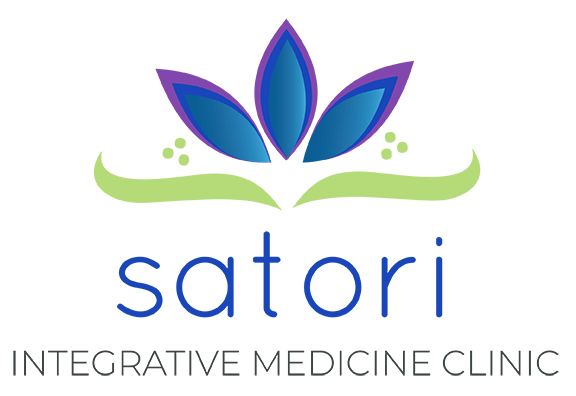Proper posture is not only a way to alleviate back pain; it is an eloquent communication revealing how we feel about ourselves and the world and may predict how we will feel in the future.
It is common knowledge that our thoughts govern our emotions which then triggers responses in our body, but the influence that the body has over thought is often overlooked. Our body constantly sends signals to the brain about its current condition. These signals, which are presented in the brain as chemical and electrical signals, are actually our unconscious emotions that are then translated into conscious ones.
For example, anxiety is felt first through physical signs such as elevated heart rate and respiration. The brain then recognizes these physical symptoms of anxiety and converts them into fearful thoughts. And how does one combat fear? One takes a few deep breaths. The brain interprets the slower breathing with how one would breathe normally and assumes the risk is over, sending a wave of relaxation through the body. The body acts as the first witness on the scene to gather the initial data which the brain then uses to plan its response.
One can use this conversation between the body and brain to their advantage. To increase feelings of happiness and confidence assume the posture and movements that are associated with that emotion—back straight and shoulders open and relaxed to free the lungs. Walk lightly and stretch often.
It doesn’t matter that you are not feeling especially happy or confident at that moment. Research has shown that you can “fake it till you make it” and use the feedback from the body and brain to shape the emotions you want to experience.
A study by the Harvard School of Business found that participants that assumed a posture of power and confidence for just two minutes decreased cortisol by about 25 percent and increased testosterone by about 19 percent for both men and women. In contrast, those that assumed a low-power pose—slumped over with arms held in—increased cortisol about 17 percent and decreased testosterone about 10 percent. In this light, think about how sitting hunched in front of a computer for eight hours a day might affect one’s disposition.
Being aware of one’s posture also works to pull attention from the hypnotic chatter of the brain into the sensations of the present moment through our body. We tend to view our body with detachment as if it were a garment that we wear rather than a vessel of our life force. Becoming in tune to the inner sensations rather than the outer appearance awakens us to the exquisite feeling of being and the empowerment that accompanies it.
The body is a way to communicate and ultimately fulfill our intentions. When we walk with conscious internal alignment, we send this message of balance out to the world. People who are spiritually aligned naturally manifest this in their bearing. Finding any sense of peace begins by welcoming ourselves back home to our bodies and acknowledging the part they play in our lives. If we can do this, we can work in concert with them to procure our sense of belonging and connection.
Chi Walking
Always walk like you deserve to be right where you are. ~Lauren Chamberlain
Chi walking uses the traditional Tai Chi focus on the body’s core as a way to correct one’s posture while walking and stimulates the body’s chi or energy flow. This allows for walking longer and more efficiently without injury.
The first and most important step in Chi walking is aligning the body. This is done through a Tai Chi technique called “Needle and Cotton.” The needle represents the thin straight line of strength running vertically up through the body along the spine. You gather energy to your center while letting go of tension in your extremities—your arms and legs—so they can be soft and fluid, like cotton, as you initiate all movement from that center line of strength. Allow that string to stretch your spine, making it long and straight.
Align your feet and body in the direction that you are going. Elongate your neck by making sure that the jaw is relaxed and your chin level with the ground. Have your hips over your ankles and your shoulders over your hips.
Next, engage your core, where the chi originates. Your core muscles are the ones that are responsible for stabilizing your pelvis in any activity, including sitting down. They hold your spine erect and balanced and help move your legs.
To engage your core from a standing position, first set your feet hip width apart and parallel, relax your feet and soften your knees. Feel that invisible thread pulling gently up to the sky, making your spine spacious and long. Then level your pelvis by placing a hand on your belly with your thumb at your belly button and your fingers just above your pubic bone. Lightly tighten the muscles under your fingers without clinching your buttocks so that your pelvis tilts. Imagine that it is a bowl of water; lift enough to keep the water from spilling out either the front or the back. This gives you a sense of stability and strength and naturally opens up your shoulders and chest allowing for easier breathing.
Next attend to your balance, making sure that your body is balanced over the leading foot when walking so that your core muscles are doing most of the work rather than your legs. To do this, simply lift up the heel of one foot, transferring your weight primarily onto one leg. This is called the one-legged posture stance. As you walk, try to maintain a one-legged posture stance with every step.
Power Pampering
Until you value yourself, you won’t value your time. Until you value your time, you will not do anything with it. ~M. Scott Peck
Posture not only communicates to your body what your current state of being is; it also articulates important aspects of your identity. Certain cues—body language—are conveyed in posture that speak eloquently about how we feel about ourselves. For example, hunched shoulders may indicate insecurity or fear. Downcast eyes may signify submissiveness, while other actions like hands on the hips and direct eye contact suggest dominance.
Assuming these body cues not only tells a story to others through body language but also stimulates chemicals in our bodies that make us believe the story ourselves. Certain power stances release testosterone, the hormone of dominance, and decrease cortisol, the hormone of stress.
In powerful people they combine well to stimulate their confidence while under pressure. The same is true in primates. In any alpha primate, just days after assuming the role, testosterone levels rise while cortisol drastically decreases.
The wonderful thing is that you can use these power-based body cues consciously as tools to actually empower yourself and enhance self-confidence. So, today, you are not only going to pamper yourself with a nourishing facial mask; you are going to use the time while it sets to nurture your self-confidence.
First, the facial mask. This mask is very simple but very powerful at the same time. It is a tablespoon of warm raw or manuka honey with a few drops of lavender essential oil added. The raw honey is full of antioxidants to fight wrinkles and aging skin. It is also a natural antibacterial treatment and deep moisturizer. The lavender soothes and heals your skin while relaxing your mind. Simply mix the two together and apply to your skin, leaving it on for about ten minutes, then washing it off with warm water.
While your mask is setting, practice these power poses for a minute or two each, really focusing on the feelings of power and confidence they generate:
- Wonder Woman: Stand with your hands on your hips and your feet shoulder width apart.
- V for Victory: Stand with your feet shoulder width apart and stretch your arms out into a V, as if you just crossed the finish line at a race.
- The President: Recline in your chair with your hands clasped behind your head. Prop your feet up or spread your knees wide to take up space.
Journaling for Personal Power
It is not who you think you are that holds you back; it is who you think you are not. ~Denis Waitley
After you have washed the facial mask off and feel relaxed and refreshed, settle down for a little reflection. Grab your favorite drink and sit somewhere private and beautiful with your journal. Get comfortable, take a nice deep breath, and now look back on the power poses that you played with while your mask was setting.
***
Torri’s book is available for purchase here.


Recent Comments